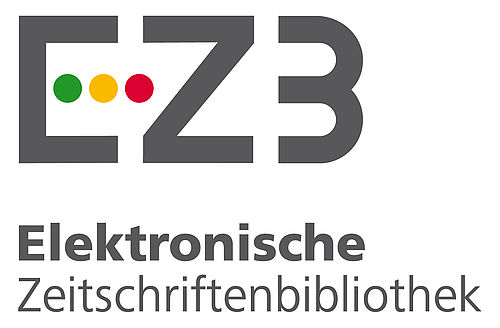Abstract
References
- 1. Akalın, E. (1999), Türkiye’nin Batısında Yetişen Ferulago Türleri Üzerinde Farmasötik Botanik Araştırmalar, İstanbul Üniversitesi Sağlık Bilimleri Enstitüsü, Doktora Tezi
- 2. Asgar, A., (2013), Anti-Diabetic Potential of Phenolic Compounds: A Review, , International Journal of Food Properties, 16:1, 91-103,
- 3. Ashraf, I., Zubair, M., Rizwan, K., Rasool, N., Jamil, M., Khan, S.A., Tareen, R.B., Ahmad, V. H., Mahmood, A., Riaz, M., Haq, M. Z. H., Jaafar, H. Z., (2018), Chemical composition, Antioxidant and Antimicrobial Potential of Essential Oils from Different Part of Daphne Mucronata Royle, Chemistry Central Journal 12:135
- 4. Başer, C. H. K., Demirci, B., Özek, T., Akalın E., Özhatay, N. (2002), Micro-Distilled Volatile Compounds from Ferulago Species Growing in Western Turkey, Pharmaceutical Biology, 40(6), 466-471
- 5. Blois, M.S. (1958). Antioxidant determinations by the use of a stable free radical. Nature, 181, 1199-1200.
- 6. Demirci, F., İşcan, G., Güven, K., Kirimer, N., Demirci, B., Başer, K. H. C., (2000), Antimicrobial Activities of Ferulago Essential Oils, Z. Naturforsch. 55c, 886-889
- 7. Ebrahimabadi, A. H., Djafari-Bidgoli, Z., Mazoochi, A., Kashi, F. J., Batooli, H, (2010), Essential Oils Composition, Antioxidant And Antimicrobial Activity Of The Leaves And Flowers Of Chaerophyllum Macropodum Boiss, Food Control 21
- 8. Golfakhrabadi, F., Ardekani- Shams, M.R., Saeidnia, S., Yousefbeyk, F., Jamalifar, H., Ramezani, N., Akbarzadeh, T., Khanavi, M., (2016), Phytochemical Analysis, Antimicrobial, Antioxidant Activities And Total Phenols Of Ferulago Carduchorum İn Two Vegetative Stages (Flower And Fruit), Pak. J. Pharm. Sci., Vol.29, No.2
- 9. Graikou, K. Gortzi O. Mantanis G. Chinou L. (2012) Chemical composition and biological activity of the essential oil from the wood of Pinus heldreichii Christ. var. Leucodermis. Eur. J. Wood Prod. (2012) 70:615–620
- 10. Jara Bermeo A. Penailillo P. San martin A. Malagon O. Gilardoni G. Gutierrez M. (2016). Chemıcal Composıtıon And Antıbacterıal Actıvıty Of Essentıal Oıls From Azorella spınosa (Apıaceae) Agaınst Wıld Phytopathogenıc Bacterıa. J. Chil. Chem. Soc., 61, Nº 4
- 11. Kürekçi, C., Sakin, F., (2017), UçucuYağlar: Antimikrobiyal Açıdan Uçucu Yağlar: In-Vitro ve In-Vivo Çalışmalar, Turkiye Klinikleri J Anim Nutr&Nutr Dis-Special Topics 2017;3(1):15-20
- 12. Mammadov, R. (2014), Tohumlu Bitkilerde Sekonder Metabolitler, Ankara, ( Nobel Akademik Yayıncılık), 67-285
- 13. Marin, I., Sayas-Barbera E., Viuda-Martos, M., Navarro, C., Sendra, E. (2016), Chemical Composition, Antioxidant and Antimicrobial Activity of Essential Oils from Organic Fennel, Parsley, and Lavender from Spain, Foods, 5, 18.
- 14. Mileski, S. K., Džamić M. A., Ćirić D. A., Ristić S. M., Grujić S. M., Matevski V. S., Marin P. D., (2015), Composition, Antimicrobial and Antioxidant Properties of Endemic Species Ferulago macedonica Micevski & E. Mayer, ACG Publications, 9:2,208-223
- 15. Rosa, L. S., Silva, N. J. A, Soares, N. C. P., Monteiro, M. C., Teodoro, A. J., (2016), Anticancer Properties of Phenolic Acids in Colon Cancer – A Review, J Nutr Food Sci, 6:2
- 16. Saya Ö. (2012). Ferulago Koch Şu Eserde: Güner, A., Aslan, S., Ekim, T., Vural, M., Babaç, M.T. Türkiye Bitkileri Listesi (Damarlı Bitkiler), İstanbul: ANG Vakfı/Nezahat Gökyiğit Botanik Bahçesi, 2012.
- 17. Semerci, A. B., Tunç, K., Okur, İ., (2020), Antioxidant activity of the fruits of Pyracantha coccinea using ethanolic extract method, Food and Health, 6(1), 35-40
- 18. Shaid Ud-Daula, A.F.M., Demirci, F., Salim, K.A., Demirci, B., Lim, L. B. L., Baser, K. H. C., Ahmad, N., (2016), Chemical Composition, Antioxidant and Antimicrobial Activitis of Essential Oils from Leaves, Aerial Stems, Basal Stems, and Rhizomes of Etlingera Fimbriobracteata (K. Schum.) R. M. Sm., Industrial Crops and Products 84, 189-198
- 19. Singleton, V.L., Rossi, J.A. (1965). Colorimetry of total phenolics with phosphomolybdic-phosphotungstic acid reagents. American Journal of Enology and Viticulture, 16, 144-158.
- 20. Tavakoli, S., Yassa, N., Delnavazi, M. R., Akhbari, M., Hadjiakhoondi, A., Hajimehdipoor, H., Khalighi-Sigaroodi, F., Hajiaghaee, R., (2017), Chemical composition and biological activities of the essential oils from different parts of Ferulago trifida Boiss, Journal of Essential Oil Research, 29:5, 407-419
- 21. Unuofin, j. O., Otunola, G. A., Afolayan, A. J., (2017), Phytochemial Screening And İn Vitro Evaluation Of Antioxidant And Antimicrobial Activities Of Kedrostis Africana (L.) Cong, Asian Pac J Trop Biomed 7(10): 901-908
Abstract
In this work, antimicrobial effects of the root, stem, leaf and flower parts extracts with ethanol and acetone of Ferulago galbanifera species against Escherichia coli, Staphylococcus epidermidis, Enterococcus faecalis Candida albicans, Bacillus subtilis, Pseudomonas aeruginosa, Staphylococcus aureus, Salmonella typhimurium strains were investigated by using the disc diffusion method. In addition to that, antioxidant activity of F. galbanifera ethanolic extracts was measured using the DPPH method, as well as their total phenolic content using the Folin-Ciocalteu’s phenol reagent technique. To our results, ethanolic extracts of leaf from F. galbanifera were found to have antimicrobial effect against the all microorganisms, whereas the acetonic extracts of leaf has shown antimicrobial effects to some microorganisms other than Staphylococcus epidermidis, E. faecalis, C. albicans species. Extracts obtained from the root and the flower parts of the plant had no antimicrobial effect on the test microorganisms. The antioxidant activity level was found to be in the following order (from the highest to the lowest): flower, leaf, stem and rood; 16.32, 215, 244, 323(μg/mL), respectively. The highest total phenolic content obtained from the parts of the plant F. galbanifere was for the root, while the lowest was for its leaf part.
Keywords
References
- 1. Akalın, E. (1999), Türkiye’nin Batısında Yetişen Ferulago Türleri Üzerinde Farmasötik Botanik Araştırmalar, İstanbul Üniversitesi Sağlık Bilimleri Enstitüsü, Doktora Tezi
- 2. Asgar, A., (2013), Anti-Diabetic Potential of Phenolic Compounds: A Review, , International Journal of Food Properties, 16:1, 91-103,
- 3. Ashraf, I., Zubair, M., Rizwan, K., Rasool, N., Jamil, M., Khan, S.A., Tareen, R.B., Ahmad, V. H., Mahmood, A., Riaz, M., Haq, M. Z. H., Jaafar, H. Z., (2018), Chemical composition, Antioxidant and Antimicrobial Potential of Essential Oils from Different Part of Daphne Mucronata Royle, Chemistry Central Journal 12:135
- 4. Başer, C. H. K., Demirci, B., Özek, T., Akalın E., Özhatay, N. (2002), Micro-Distilled Volatile Compounds from Ferulago Species Growing in Western Turkey, Pharmaceutical Biology, 40(6), 466-471
- 5. Blois, M.S. (1958). Antioxidant determinations by the use of a stable free radical. Nature, 181, 1199-1200.
- 6. Demirci, F., İşcan, G., Güven, K., Kirimer, N., Demirci, B., Başer, K. H. C., (2000), Antimicrobial Activities of Ferulago Essential Oils, Z. Naturforsch. 55c, 886-889
- 7. Ebrahimabadi, A. H., Djafari-Bidgoli, Z., Mazoochi, A., Kashi, F. J., Batooli, H, (2010), Essential Oils Composition, Antioxidant And Antimicrobial Activity Of The Leaves And Flowers Of Chaerophyllum Macropodum Boiss, Food Control 21
- 8. Golfakhrabadi, F., Ardekani- Shams, M.R., Saeidnia, S., Yousefbeyk, F., Jamalifar, H., Ramezani, N., Akbarzadeh, T., Khanavi, M., (2016), Phytochemical Analysis, Antimicrobial, Antioxidant Activities And Total Phenols Of Ferulago Carduchorum İn Two Vegetative Stages (Flower And Fruit), Pak. J. Pharm. Sci., Vol.29, No.2
- 9. Graikou, K. Gortzi O. Mantanis G. Chinou L. (2012) Chemical composition and biological activity of the essential oil from the wood of Pinus heldreichii Christ. var. Leucodermis. Eur. J. Wood Prod. (2012) 70:615–620
- 10. Jara Bermeo A. Penailillo P. San martin A. Malagon O. Gilardoni G. Gutierrez M. (2016). Chemıcal Composıtıon And Antıbacterıal Actıvıty Of Essentıal Oıls From Azorella spınosa (Apıaceae) Agaınst Wıld Phytopathogenıc Bacterıa. J. Chil. Chem. Soc., 61, Nº 4
- 11. Kürekçi, C., Sakin, F., (2017), UçucuYağlar: Antimikrobiyal Açıdan Uçucu Yağlar: In-Vitro ve In-Vivo Çalışmalar, Turkiye Klinikleri J Anim Nutr&Nutr Dis-Special Topics 2017;3(1):15-20
- 12. Mammadov, R. (2014), Tohumlu Bitkilerde Sekonder Metabolitler, Ankara, ( Nobel Akademik Yayıncılık), 67-285
- 13. Marin, I., Sayas-Barbera E., Viuda-Martos, M., Navarro, C., Sendra, E. (2016), Chemical Composition, Antioxidant and Antimicrobial Activity of Essential Oils from Organic Fennel, Parsley, and Lavender from Spain, Foods, 5, 18.
- 14. Mileski, S. K., Džamić M. A., Ćirić D. A., Ristić S. M., Grujić S. M., Matevski V. S., Marin P. D., (2015), Composition, Antimicrobial and Antioxidant Properties of Endemic Species Ferulago macedonica Micevski & E. Mayer, ACG Publications, 9:2,208-223
- 15. Rosa, L. S., Silva, N. J. A, Soares, N. C. P., Monteiro, M. C., Teodoro, A. J., (2016), Anticancer Properties of Phenolic Acids in Colon Cancer – A Review, J Nutr Food Sci, 6:2
- 16. Saya Ö. (2012). Ferulago Koch Şu Eserde: Güner, A., Aslan, S., Ekim, T., Vural, M., Babaç, M.T. Türkiye Bitkileri Listesi (Damarlı Bitkiler), İstanbul: ANG Vakfı/Nezahat Gökyiğit Botanik Bahçesi, 2012.
- 17. Semerci, A. B., Tunç, K., Okur, İ., (2020), Antioxidant activity of the fruits of Pyracantha coccinea using ethanolic extract method, Food and Health, 6(1), 35-40
- 18. Shaid Ud-Daula, A.F.M., Demirci, F., Salim, K.A., Demirci, B., Lim, L. B. L., Baser, K. H. C., Ahmad, N., (2016), Chemical Composition, Antioxidant and Antimicrobial Activitis of Essential Oils from Leaves, Aerial Stems, Basal Stems, and Rhizomes of Etlingera Fimbriobracteata (K. Schum.) R. M. Sm., Industrial Crops and Products 84, 189-198
- 19. Singleton, V.L., Rossi, J.A. (1965). Colorimetry of total phenolics with phosphomolybdic-phosphotungstic acid reagents. American Journal of Enology and Viticulture, 16, 144-158.
- 20. Tavakoli, S., Yassa, N., Delnavazi, M. R., Akhbari, M., Hadjiakhoondi, A., Hajimehdipoor, H., Khalighi-Sigaroodi, F., Hajiaghaee, R., (2017), Chemical composition and biological activities of the essential oils from different parts of Ferulago trifida Boiss, Journal of Essential Oil Research, 29:5, 407-419
- 21. Unuofin, j. O., Otunola, G. A., Afolayan, A. J., (2017), Phytochemial Screening And İn Vitro Evaluation Of Antioxidant And Antimicrobial Activities Of Kedrostis Africana (L.) Cong, Asian Pac J Trop Biomed 7(10): 901-908
Details
| Primary Language | English |
|---|---|
| Subjects | Structural Biology |
| Journal Section | Research Articles |
| Authors | |
| Publication Date | June 27, 2020 |
| Published in Issue | Year 2020 Volume: 3 Issue: 1 |
-------------------------------------------------------------------------------------------------------------------------------













-------------------------------------------------------------------------------------------------------------------------
 CUPMAP Journal is licensed under a Creative Commons Attribution-NonCommercial-NoDerivatives 4.0 International License.
CUPMAP Journal is licensed under a Creative Commons Attribution-NonCommercial-NoDerivatives 4.0 International License.
-----------------------------------------------------------------------------------------------------------------------------------------
This is an open access journal which means that all content is freely available without charge to the user or his/her institution. Users are allowed to read, download, copy, distribute, print, search, or link to the full texts of the articles, or use them for any other lawful purpose, without asking prior permission from the publisher or the author. This is in accordance with the BOAI definition of open access.

